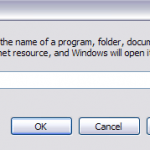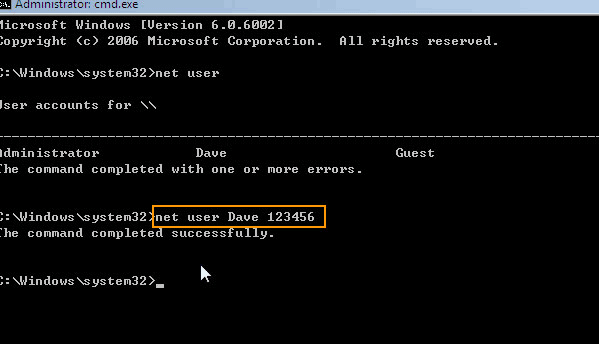

- WINDOWS VISTA COMMAND PROMPT COMMANDS HOW TO
- WINDOWS VISTA COMMAND PROMPT COMMANDS CODE
- WINDOWS VISTA COMMAND PROMPT COMMANDS WINDOWS
WINDOWS VISTA COMMAND PROMPT COMMANDS WINDOWS
*CLIP Redirects output of another command to the Windows clipboard.ĬMD Starts a new instance of the Windows command interpreter. *CHOICE Batch file command that allows users to select from a set of options.ĬIPHER Displays or alters the encryption of directories on NTFS partitions.
WINDOWS VISTA COMMAND PROMPT COMMANDS CODE
*BCDEDIT Sets properties in boot database to control boot loading.ĬACLS Displays or modifies access control lists (ACLs) of files.ĬALL Calls one batch program from another.ĬD Displays the name of or changes the current directory.ĬHCP Displays or sets the active code page number.ĬHDIR Displays the name of or changes the current directory.ĬHKDSK Checks a disk and displays a status report.ĬHKNTFS Displays or modifies the checking of disk at boot time. Some commands involving specialized system or network administration have been omitted.ĪSSOC Displays or modifies file extension associations.ĪTTRIB Displays or changes file attributes.īREAK Sets or clears extended CTRL+C checking. Running a command prompt as administrator is described on this page. Note that some commands may require administrator privileges. There are also some new commands and they are indicated with an asterisk in the list below.

For example, Robocopy from Server 2003 is now included. (The Vista version is 6.0 whereas the XP version is 5.1.) Several commands are now in the standard list that were formerly available only in Support Tools or the Server 2003 Tools. Thus, the old command interpreter cmd.exe has been continued although in a slightly newer version. The new application is called Powershell and is described on another page. Originally, Microsoft intended to incorporate a new command shell in Vista but then decided to make the new shell a stand-alone application. Test it by right-clicking on a folder, drive or desktop.Windows Vista Command Line List and Reference Commands in Windows Vista This change will take effect immediately. Step 4: Then right-click the REG file and choose Merge to automatically add the registry entries.Īnd then confirm the operation and you are done by clicking Yes. Windows Registry Editor Version Command Window Here 3: Save the cmd. To add the entry to This PC (My Computer) context menu, use the following REG file: To add the entry to the context menu for Desktop, use the following REG file: Windows Registry Editor Version Command Window Here /s /k pushd \"%V\"" To add the Open Command Window Here (Administrator) option to the context menu for file system folders, use the following REG file: Step 2: Copy the below contents to Notepad. Press Win+R keys to bring up Run dialog, input notepad and hit Enter key. To add Open command window here as administrator to the context menu for file system folders.

WINDOWS VISTA COMMAND PROMPT COMMANDS HOW TO
How to Add Open Command Window here as administrator to the context menu So that you can open Command Prompt as Administrator from the context menu in Windows 10. This article will show you how to add an Open Command Prompt here (Administrator) option to the right-click context menu for folders, Desktop and to This PC. How to Open Command Prompt as Administrator from Context Menu


 0 kommentar(er)
0 kommentar(er)
